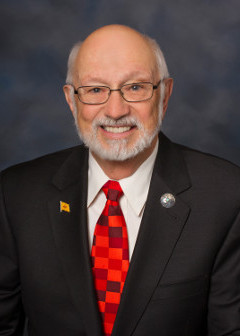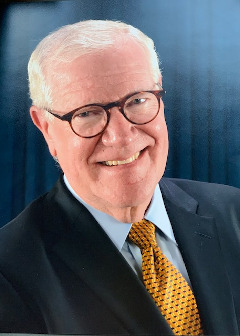A School of Public Health Can Transform New Mexico
(The following Guest editorial is written by New Mexico State Senate authors of legislation to be filed in the January 2022 Legislative Session for the creation of a New Mexico School of Public Health operated jointly by the University of New Mexico and New Mexico State University. Senator Cervantes Chairs the Judiciary Committee, Senator Hickey is Co-Chair of the Tobacco Settlement Revenue Oversight Committee, and Senator Ortiz y Pino is Chair of the Health and Public Affairs Committee.)
By New Mexico State Senators Joe Cervantes, Martin Hickey, MD and Jerry Ortiz y Pino.
One of the most important lessons we should have learned from the Covid-19 pandemic is that as a state we had allowed our public health infrastructure to dwindle so badly that we were slow in responding. That must not happen again when the next—and there will certainly be another—pandemic strikes.
Fortunately, we have the opportunity to be better prepared. New Mexico’s government is enjoying an unprecedented revenue bonanza this fiscal year. Oil revenue and economic recovery from the pandemic have produced a billion dollar reserve above currently budgeted spending—and in addition to the previous year’s very robust reserves. Furthermore, we still have $700 million in Federal American Recovery Program funds available.
So legislators got creative and suggested “transformative” uses for these unprecedented revenues, projects that don’t just add to what already exists, but that could be genuine game changers; projects that future generations might look back on with enormous gratitude for the shift in our trajectory that they produced.
One such idea is for a School of Public Health operated jointly by UNM and NMSU. It has drawn enthusiastic support from UNM’s new Vice President of Health Sciences, Dr. Douglas Ziedonis, and from the leadership of both UNM and NMSU. Ziedonis was involved in creating a School of Public Health at UC San Diego, so has seen first-hand just how powerful a tool such an institution can be in providing a state with a focus on preventing and eliminating health threats—not just on medically treating illness once it occurs.

Senator Joseph Cervantes 
Senator Jerry Ortiz y Pino 
Senator Martin Hickey
Currently in New Mexico’s state budget we spend $9 billion on treating disease, mostly through Medicaid. In contrast, expenditures on public health (before Covid-19 brought in huge amounts of Federal money) was less than $100 million. Yet medical experts point out that 90% of the gains in life expectancy we enjoy today have come from public health initiatives like vaccination programs; clean air and water efforts; highway safety laws; prenatal and infant care improvements; environmental clean-up and similar attacks on social determinants of health.
We spend vastly larger sums on medical care. Improvements in surgical and pharmaceutical technology are impressive, but the gain in life expectancy from treating people once they get ill amounts to only about 10%. This is not an argument for reducing spending on medical care, but it suggests stepped-up spending on public health could see a far larger direct benefit to the populace.
Health leaders are excited about the prospect of a School of Public Health in New Mexico (we are the only state in the Southwest without one) for many reasons, including:
Covid has shown we must be better prepared for the inevitable onslaught of future pandemics; public health policies in place ahead of time and staffing key positions with trained public health personnel will do that.
Health policy formulation currently flies blind for lack of independent analysis of medical care outcomes. We simply don’t have the personnel or the resources needed to analyze the data being produced on expenditures, procedures, effectiveness and unmet need. The new school could take the lead in this—and do it largely financed with Federal and Foundation research grants.
Many states have created “Government Resource Centers” at a major state research university. Finding a way to use academic research findings in developing legislation and programming in State government would create the possibility of rational, data-driven policies, perhaps for the first time in the health field.
Our new School of Public Health, by involving cross-disciplinary expertise from engineering, business, regional planning, communications and practically every other department on the campuses, would become our New Mexico Government Resource Center. An expenditure for it from this year’s surplus funds would be a win/win for the state for decades to come.